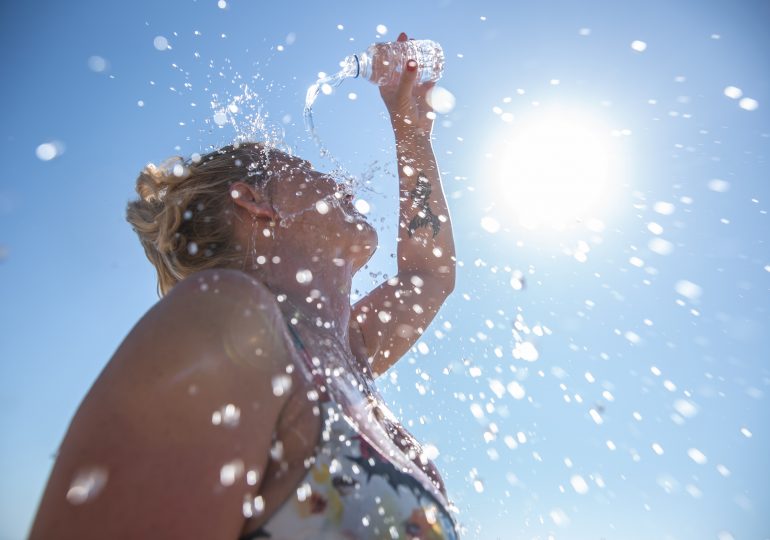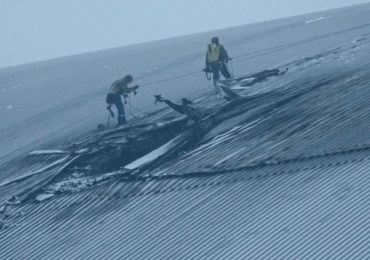The first major heat wave of the season has brought scorching temperatures in the three-digit threshold across the Southwestern U.S. this week, impacting metros like Las Vegas and setting record highs in other cities like San Angelo, Texas.
The sweltering heat will impact California, Arizona, New Mexico, Nevada, Utah, Colorado, Oregon, Idaho, and Wyoming through Friday, according to Accuweather. Local officials are already preparing for a brutal season of heat as Phoenix firefighters plan on implementing new tactics this year, such as ice immersion, to save people from heat-related illnesses and deaths.
[time-brightcove not-tgx=”true”]
Increasing temperatures pose great risks for Americans: extreme heat is listed as the highest climate-related fatality in the U.S., per the National Weather Service. It’s a problem that also disproportionately impacts people living in low-income areas, a study published in the Multidisciplinary Digital Publishing Institute found.
That problem may only exacerbate over time. Last year was the hottest year on record—and some experts predicting 2024 could fare even worse as climate change accelerates with rising carbon emissions.
This heat wave also comes following another natural disaster as California still recovers from their largest wildfire so far this season. “The Corral Fire has become the first 10,000-acre fire this year in California,” said AccuWeather Meteorologist Brandon Buckingham. “Given the heat, dryness, and sunshine this week, there will likely be more fires breaking out that can quickly spread.”
Here’s how to protect yourself during a heat wave.
Stay indoors as much as possible
During periods of extreme heat, residents should avoid being outdoors as much as possible. If you do exercise outside, experts say that it’s best to do so in the early morning and late evening when temperatures are not so high.
The Federal Emergency Management Agency (FEMA) advises people to stay in an air conditioned building, like a shopping mall or a public library, during periods of extreme heat. “Even a few hours spent in air conditioning can help your body stay cooler when you go back into the heat,” FEMA says.
Protect your body
In order to stay cool, people should also wear loose, light-colored clothing that is lightweight. Staying hydrated is key to dealing with the heat, though wearing sunscreen is also important because it helps people regulate their body temperature, according to the University of California.
Keep your house cool
While people should prioritize moving to an air-conditioned space, even those without air conditioning can still keep their house cool. Experts say that the most efficient way to do so is by blocking out sunlight from entering the home through outside shading techniques, installing plants that can absorb sunlight, or using blackout curtains.
It might be worthwhile to consider using insulated glass or low e-glass to help block out heat, or purchasing ceiling fans with large paddles, experts previously told TIME. However, once temperatures reach the 90s, fans are no longer efficient.
Read More: How to Keep Your Home Cool in Extreme Heat
Recognize the signs of heat-related illness
Residents who expose themselves to the heat are also at risk of exposing themselves to a number of heat-related illnesses, including heat stroke, heat exhaustion, heat cramps, heat rash, and more.
Heat stroke is the most serious of them, according to the Centers for Disease Control and Prevention (CDC), and can be fatal. Symptoms include confusion, slurred speech, loss of consciousness, sweating, seizures, high body temperatures. Other forms of heat-related illness can cause headaches, nausea, general weakness, and more.
It’s important to seek medical help if you, or someone you know, appears to be affected by the heat. Efforts to cool the person by placing cold wet cloths on their skin, putting them in an ice bath, or soaking their clothing with cool water, can help.
It is especially important to be cautious of the elderly, pregnant women, those with preexisting health conditions, and young children, who are at greater risk for heat-related illnesses.
Leave a comment








